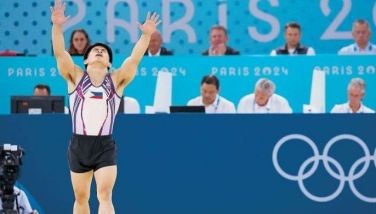Simple viruses — almost perfect
The late Celso R. Roque was one of my close friends. He used to say that, since more than 99 percent of all matter in the universe is in the form of plasma, God must be a plasma physicist. Celso was a plasma physicist, so one would expect such a statement from him. I disagree with him on this issue. To me, the epitome of perfection is a crystal. So, in my opinion, God must be a crystallographer. [You might expect this statement from me because I was trained as a (protein) crystallographer.]
Many organisms, including man, strive for symmetry (in our quest for perfection?). Indeed, our concept of beauty in a woman is a symmetrical face — among other things. Yet, we have achieved only bilateral symmetry. In this respect, we are well behind the simple viruses.
We cannot find a more appropriate example of simplicity than the simple viruses. (I am being redundant here.) You see, viruses are the smallest creatures. The simplest viruses consist of a very small number of genes inside a protective protein shell, or capsid. One very simple virus, satellite tobacco necrosis virus, is reported to have a genome with just one gene — the one that codes for the capsid protein. Such a virus obviously cannot propagate itself by itself; it needs the help of a more regular (complex) virus. This is because various other genes are needed (to code for essential enzymes and other molecules) to produce progeny.
Now, genes (polynucleotides) and proteins (polypeptides) are related by a simple equation: three nucleotide bases are needed to code for one amino acid. The average molecular weight of a nucleotide is about 330, while the average molecular weight of an amino acid is about 135. Since the size of a molecule is proportional to its molecular weight, there is no way that we can wrap one amino acid around three bases to form a protective shield. But we can build a protective shell by repeated use of a single type of protein, even a small protein, in much the same way as we can construct a house wall with a single type of brick. But when building a house wall, we use mortar, which allows us to cement the bricks one on top of another, side-by-side, around a corner, etc. — basically in any fashion we want. The simple viruses do not have this option; the protein that they use to build the shell must be its own “mortar” to enable it to bond strongly to the immediately adjacent protein molecules and in the same fashion to each one; the interaction has to be “equivalent.” And, to be completely protective, the shell has to be a closed structure (no leaks). Many simple viruses accomplish this by building “spherical” shells that resemble Plato’s “Perfect Solids.” This was first pointed out by Francis H. Crick and James D. Watson (yes, those two) in a Nature paper in 1956. (Crick was trained as a protein crystallographer and Watson was a virologist, so they formed a good partnership.)
According to Plato, there are only five possible regular solids: the four-sided tetrahedron, the six-sided hexahedron, the eight-sided octahedron, the 12-sided dodecahedron, and the 20-sided icosahedron. The biggest of these structures, if they are all to be built using the same protein molecule, is the icosahedron, which has 20 triangular faces. Not surprisingly, the simple spherical viruses have icosahedral symmetry and the simplest of them use 60 identical protein units (three each in the 20 triangular faces) to build their protective shells.
But an icosahedron built with only one protein type may not be big enough. So, some viruses, like the cold virus, use four different proteins to build their shells — and have to have four different genes to code for those proteins. (A Filipino, Leodivico L. Ilag, was involved in the structure determination of one such virus, phi X174.) Some viruses, like the tomato bushy stunt virus, manage to become big without adding new protein types. Instead, they simply make capsid proteins that are deformable. Such proteins can now depart from strict adherence to symmetry and, with slight structural adjustments, can associate in a manner aptly described as “quasi-equivalence” to build bigger shells.
Some viruses, again using only one protein type, form long helical shells which they wrap around their genetic material. The helical shell is open at both ends — one difference between helical and spherical viruses. An example of the helical viruses is tobacco mosaic virus. (A Filipino, Arthur L. Adiarte, contributed to the study of the assembly of the shell of this virus.)
Viruses are parasites and use the synthetic machinery of host cells (their victims) to make progeny and propagate themselves. Many viruses integrate into host DNA, including our own (!), and we can only wonder if viruses have actually contributed to what we are now. But whether they are parasites or contributors to our own being, we have to admire these simplest of creatures for their parsimony, for their knowledge of symmetry, and for their ability to build perfectly symmetrical abodes, but not all — many only build almost perfect structures.
* * *
Eduardo A. Padlan is a corresponding member of the NAST and is an adjunct professor in the Marine Science Institute,
- Latest






























